Artificial intelligence ( A.I. )
Artificial intelligence is the ability of a computer to acquire and represent knowledge, learn and develop an autonomous decision-making capacity, which allows it to solve problems and understand the phenomena of a complex operating environment, according to a rational logic.
The study of artificial intelligence was born in the 50s with the publication of the article "Computing Machinery and Intelligence" by Alan Turing. The term artificial intelligence was, however, used for the first time by John McCarthy in 1956.
What is not artificial intelligence?
Artificial Intelligence (A.I.) is not necessarily the emulation or simulation of human intelligence. The process of automatic reasoning could also follow logics and schemes that are completely different from those of man.
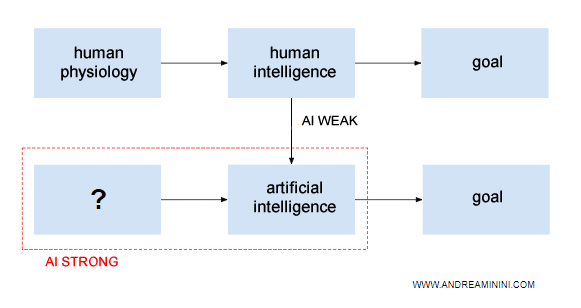
Human and robotic intelligence have goals to achieve, but the chosen roads to reach them can also be different. Furthermore, human intelligence does not have the same goals as artificial intelligence.
Note. Much of a man's decisions derive from human needs, from the instinct of survival and reproduction. None of this exists in artificial intelligence. Some phenomena such as feelings, fear, love, hopes, dreams and irrationality derive from human nature. In an artificial intelligence they are useless aspects. For this reason, human intelligence and artificial intelligence have different objectives and processes.
What is artificial intelligence?
Artificial intelligence is an instrument to help man.
One of the most useful applications is the creation of autonomous decision-makers, able to plan their own choices, but to pursue specific objectives set by the man.
There are many applications of AI.
For example, in scientific research, an AI system can experiment much faster and more efficiently than humans by analyzing a large volume of data (big data). These data would be impossible to analyze for a man.
Furthermore, robotic agents can perform repetitive or dangerous operations, allowing man to carry out supervision work.
Looked at from this point of view, the history of artificial intelligence is the natural evolution of the mechanization process, which began with the first industrial revolution in the eighteenth century.
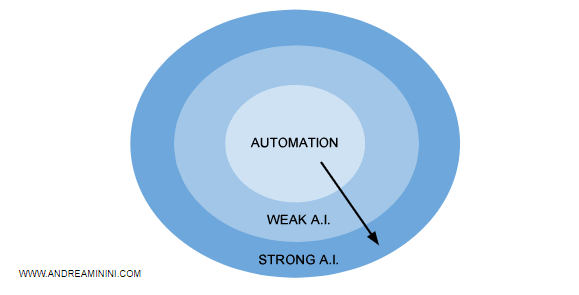
The difference between weak and strong AI
There are currently two distinct visions of AI:
- In Weak A.I. the machine simulates human reasoning and cognitive processes without equaling human intellectual abilities.
- In Strong A.I. the machine has its own autonomous and independent intelligence, equal or superior to human intelligence.
Currently, artificial intelligence has reached only the first level (weak AI). I.A. strong will be developed in at least another twenty or thirty years.
Note. Probably, in the future the strong AI will reach the technological singularity. However, artificial super-intelligence is beyond our comprehension. It is a hypothesis that is still very far but theoretically possible.
In recent years, the field of machine learning (machine learning) has seen significant development. It's one of the earliest practical applications of artificial intelligence.
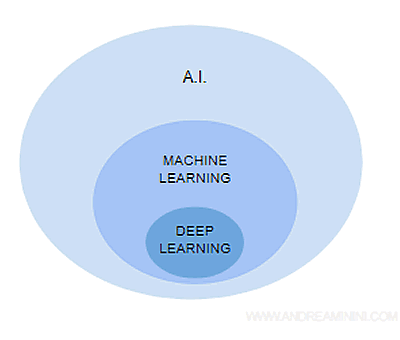
What is machine learning? Generally, it involves feeding a computer with data about a problem. The computer then identifies a pattern to classify information, make decisions, or predict future trends. Importantly, the decision-making model isn’t crafted by a programmer; it’s discovered by the machine itself. There are various ML algorithms and paradigms, including supervised, unsupervised, and reinforcement learning.
In the realm of machine learning, it's worth mentioning deep learning, which relies on the use of deep neural networks (neural network).
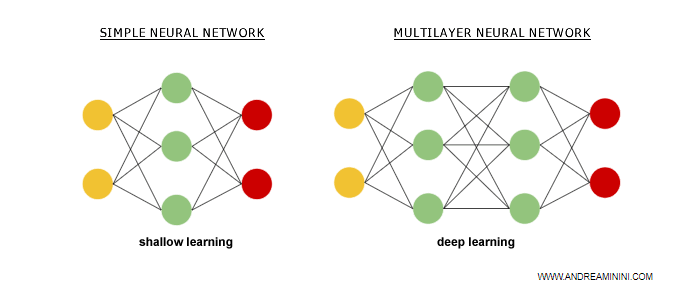
What is a rational agent?
A rational agent is an intelligent system, able to process the input signals coming from its sensors, translate them into logical symbols and represent the knowledge of the external environment.
The representation of knowledge is very important in the construction of an intelligent system, because it significantly affects both the effectiveness and the efficiency of the decision-making process.
The representation of external reality is compared with an internal knowledge base (knowledge base) to start a logical-algorithmic reasoning process, in order to make decisions useful for achieving a particular goal or purpose.
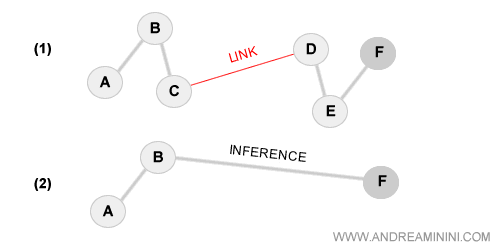
Once the decisions are made, the choices and the strategy to adopt are established, these are implemented by the rational agent's actuators. It may be a mechanical robotic arm as well as a virtual logical flag.
There is never a single decision algorithm. Generally, an intelligent system uses different algorithms to make decisions, depending on the context in which the agent is located. This also happens in the human mind according to Marvin Minsky's theory of emotional machine.
Can a computer think?
This question is not simple and can have multiple multidisciplinary, philosophical or engineering answers.
If by "thought" we mean the ability to reason by schemes, the answer is positive.
In 1950, Alan Turing was one of the first to study this problem, one of the founders of computer science and artificial intelligence, developing an empirical test to determine if a machine can be called intelligent or not. It is known Turing Test.
If instead by "thought" we mean the awareness of existence, the soul of a person, the answer is rather uncertain and doubtful. Maybe it's negative.
Certainly, it is a question that borders the field of knowledge engineering.
For this reason, artificial intelligence is also the object of study in philosophy, cognitive psychology and complexity theory.
Example. There is no way to understand why a piece of paper falls from the table and another does not. We can know the flow of air in the room, but we will never be able to determine with certainty the dynamics of the wind in every detail. In the same way, a thought evolves in a complex way like a wave of the sea. For how many waves there are, you will never be a wave exactly like another.
FAQ
- What programming language to use for artificial intelligence?
Recently, Python is widely used. Especially for machine learning and deep learning.
